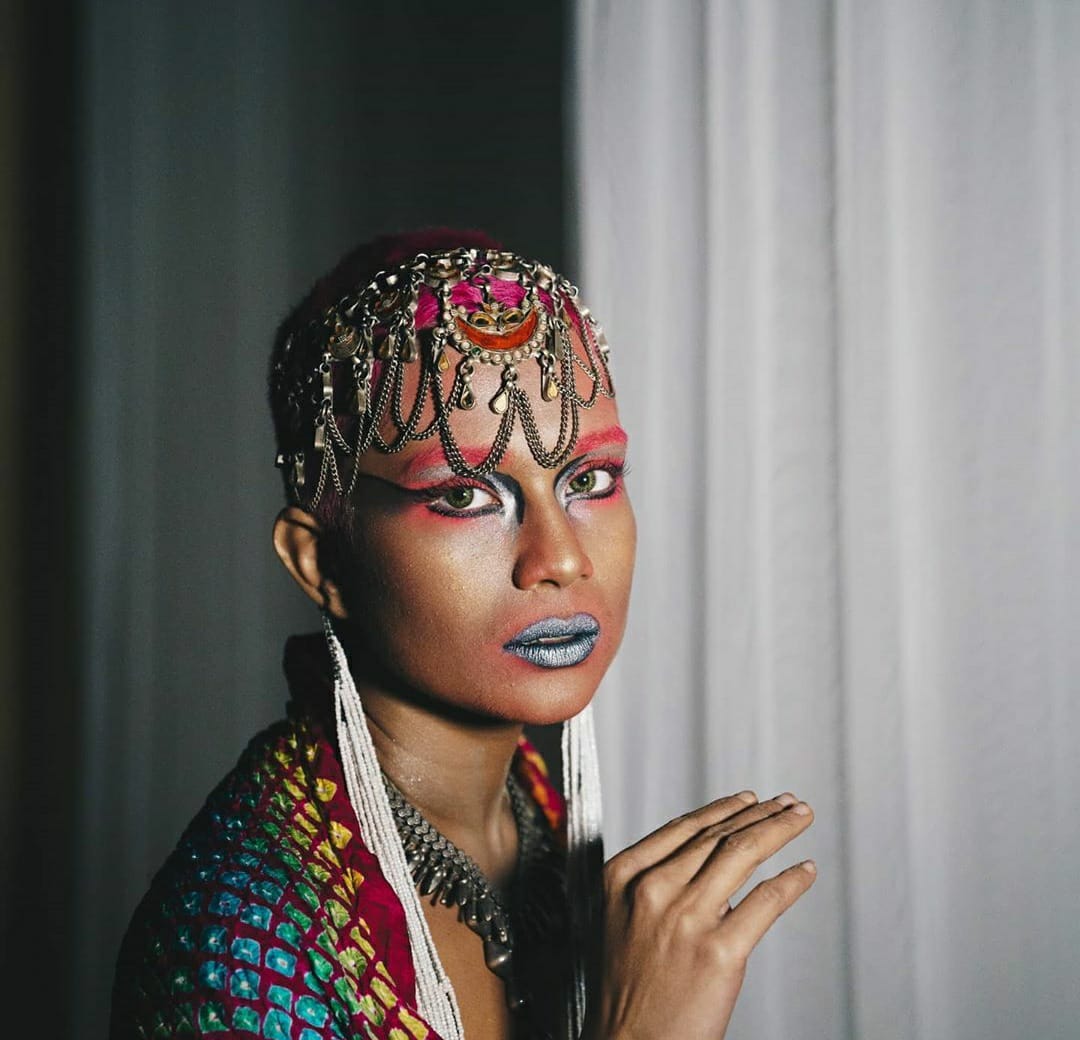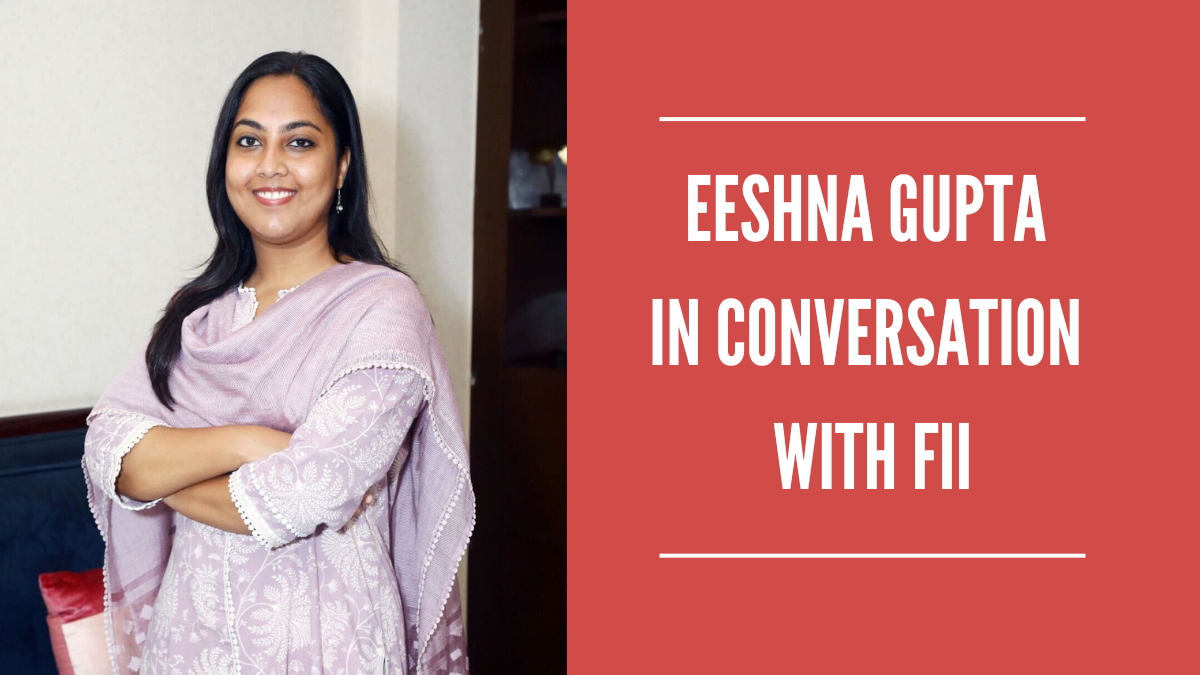Durga is an artist, activist, educator, and drag king. A passionate performance artist, they run the ‘Durga Gawde Studio’ and believe in sharing their creative action with the world through educational programs based on the idea of learning through making. In this interview, Durga talks about the meaning and role drag plays in their life, how they began their journey with this art form and much more! You can find them on Instagram.
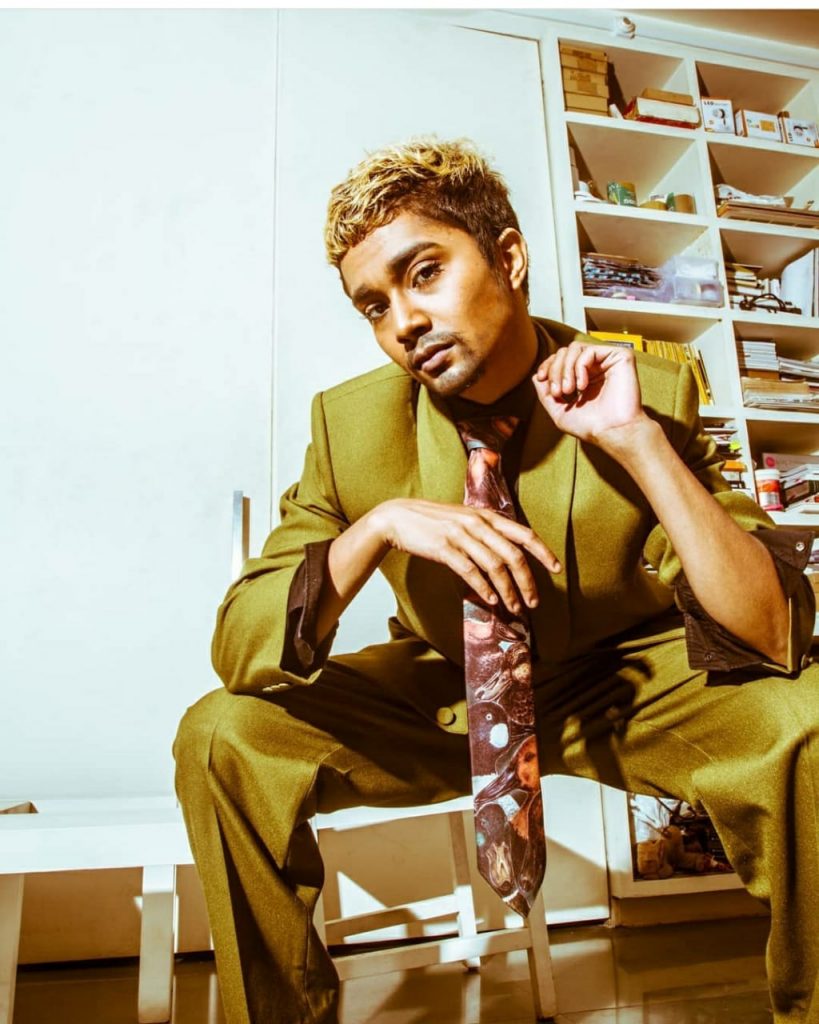
Sanchi: Do you think there is a difference between drag and cross dressing?
Durga Gawde: Drag is essentially an art form and the best way I can describe it is that it is the art form of illusion and of critiquing gender and the norms—challenging them, critiquing them, performing them, making fun of them. There are lots of ways we can look at drag and there are also different types of drag. You’re playing a character when in drag but I don’t think I can say the same if we talk about cross dressing.
Sanchi: What role does drag play in your life?
Durga Gawde: I started doing drag about 3 years ago when I came back to India after studying in the U.S. At that time, I came back to being boxed as an Indian girl again and I felt this incessant need to just declare it to my parents and the whole world that they might know who I am but they didn’t know what I am. Only I know the truth about what I am. For that matter, every individual knows within their hearts what they truly are—everybody knows.
When I came out, I started experimenting a lot with my appearance and going back to things like shaving my face which had come naturally to me when I was a child. I don’t think anybody in the world should need any other reason apart from ‘I feel good doing this’ and it’s nobody’s business to tell them how to do it.
When I came out, I started experimenting a lot with my appearance and going back to things like shaving my face which had come naturally to me when I was a child. I don’t think anybody in the world should need any other reason apart from ‘I feel good doing this’ and it’s nobody’s business to tell them how to do it. As long as you are being yourself and not hurting someone or disrupting their life—you should do whatever feels good and natural to you. That’s how drag started for me.
I just started putting a 5 O’clock shadow on my face because that felt natural to me. It became a space where I could assert my masculinity in everyday life and get to celebrate it and not have anyone question or challenge me. I am also a performance artist, a sculptor, an educator and a lot of my work is inspired by my experiences. I am a gender fluid person and in my life, I go through transitions everyday. Everyday, I am putting something on, taking something off. I go out with a beard, I go out with a really deep V neck top—whatever I feel like. It doesn’t matter as long as it’s how I want and what I feel and choose at that moment. But when I am performing, it is all of my life experiences that come together and I perform that emotion. That’s what drag gives to me.
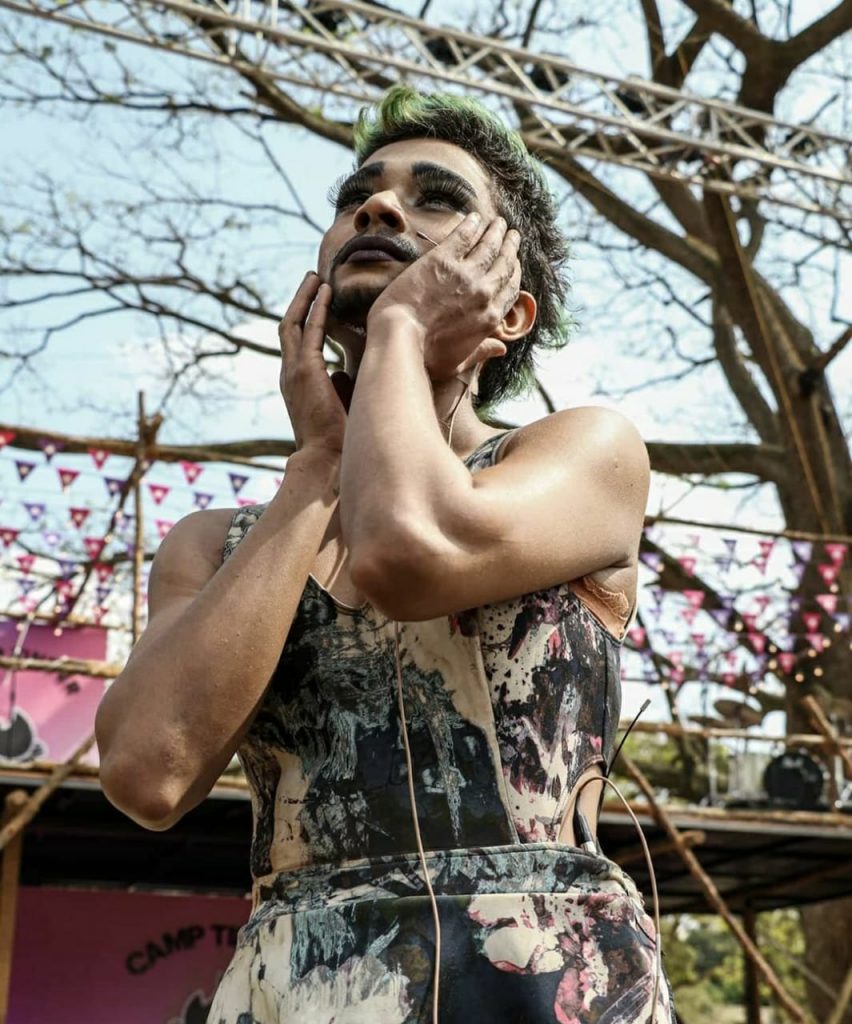
Sanchi: How did your drag journey start?
Durga Gawde: One day, Alaska Thunderfuck 5000 was performing in India and I went to watch the show. A lot of Indian drag queens were also performing there and Rani KoHenur happened to be one. I didn’t know much about the Indian drag scene at that point. I ended up going backstage to meet Alaska—which is where I also met Rani. I introduced myself to them as a gender fluid person who loves drag and showed them some pictures with a 5 O’clock shadow—and that’s it! Both Alaska and Rani instantly said that I had to do it! Rani took my number and told me that I was going to be India’s first drag king and that she was going to train me. 6 months down the line, she booked me a tour and that was the official start of my drag journey.
Sanchi: If we talk about gender roles on the stage, do you think the performance of drag helps break the stereotypes or does it in any way further strengthen them?
Durga Gawde: I don’t see it in this black and white binary. I’m a grey area person. Or better—a rainbow person. I think when we make things a ‘yes or no’ it becomes very rigid, we make them like a multiple choice question. It does not reflect the subtleties of the things we need to pay attention to. So I don’t think I can answer that question.
Sanchi: In your career as a drag king, what are the challenges you’ve faced so far?
Durga Gawde: There’s a lot that happens that I can go on and on about. But I also think I let those things affect me and that took a huge toll on me sometimes. The amount of pain, the amount of self-destructive thoughts that I had to fight for my own self because I had allowed people to treat me in a certain way really affected my self worth. I then decided that if I want to be treated in a certain way, I’m not going to wait around for them to do things for me. I’m just going to give it to myself. I am going to find a way around it. A lot of this came from Art school for me—you really learn the power of your imagination there. Things are still hard for me. But you have to work around that situation, you have to fight for yourself, fight for your life. Most importantly—fight for the life that you want, not the one you’re given.
Also read: Presenting The Gabrielle Show – Chennai’s First Ever Drag Show!
Sanchi: Do you think that drag queens face similar problems?
Durga Gawde: I mean—there are more drag queens than drag kings in this country. That’s all I have to say. Make what you want out of that.
Sanchi: What are your thoughts on the invisibility of drag kings in the emerging drag scene in India?
Durga Gawde: It’s not invisibility—there’s just not enough of us because we are so scared to come out. It’s hard to put yourself out. It’s not easy to like—to bind my chest. It takes so long, and if I do it wrong I can fracture my ribs. I could puncture a lung. When I dance I have to wear 5 inch heels, because I want to feel taller, I want to feel more masculine. Because I’m skinny, if I don’t look taller, it doesn’t work. I look like a tiny boy. But when I’m up there, unless you’re like really staring at my feet, you won’t be able to tell.
We go through so much pain but what we like about it is the fact that we are choosing what we want to be and when a person chooses what to do with their bodies, whatever it is, it is their body.
All the things that we do are really hard—even for men. We go through so much pain but what we like about it is the fact that we are choosing what we want to be and when a person chooses what to do with their bodies, whatever it is, it is their body. Once someone chooses what they want to do, the minute they’ve made a statement by chopping their hair in some way or by putting some colour in it in a place like India—that becomes an announcement of them not conforming to ideals. That is, of course, a lot harder to do in a trans body with a womb.
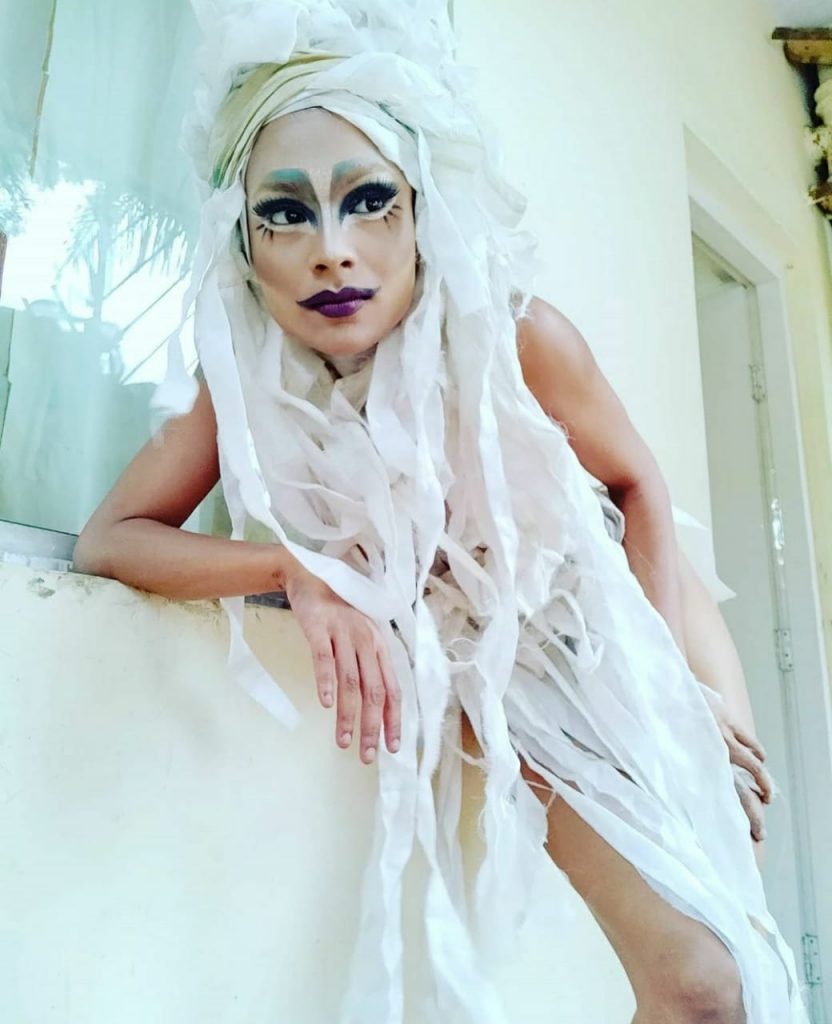
Sanchi: Do you think drag artists in other countries also face similar challenges?
Durga Gawde: Gender based trauma and discrimination are very uniform through out the world—especially when it comes to queer people and even more so, when it comes to gender fluid people like me. Gender fluid people are nowhere to be even thought of. We’re not even seen as trans. I didn’t even know two years ago when I came out as gender fluid that I’m actually trans as well. I didn’t know that myself and I was talking about it to the world.
And when I found that out for myself it made so much sense because my gender is in transition—always. That makes me trans. When people say they are gender queer that means it’s trans because it is in transition and not part of the binary but no one looks at it like that. We might know who we are but as I said earlier, we also need to think about what we are. When I ask a person what they are, it always startles them.
Someone asks me what am I, I would say, top half man, bottom half woman in my trans body. That’s how I would answer that question. This is what I’m on the inside, this is what I’m on the outside, this is how I choose to present myself, this is how I express myself, that is what I am. But truly what I am is a person who believes that I’m a place of love and not of rage. But that’s because I have thought about it.
Also read: In Conversation With Glorious Luna: A Drag Performer, Actor, Model &…
When someone has a gender identity struggle in this world—they truly get to feel themselves and know themselves. I can say this out loud for any trans person. We really know what we are from both—the inside and the outside both. #therainbowrevolution
Featured Image Source: Shreya Chitre
All pictures have been provided by Durga.
About the author(s)
Sanchi Mehra is a Sociology student who takes a keen interest in the themes of gender and sexuality and their manifestations in popular culture. When not over-analyzing a TV show, she can be found decoding social and cultural theories or acting on stage (or Zoom). Other interests include dramatic dancing, and calligraphy and lettering. An intersectional feminist, Sanchi hopes to work towards making educational and corporate spaces more inclusive and safer for all genders and sexualities
